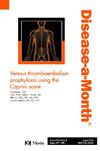间歇性禁食与心血管疾病:证据范围综述。
IF 4.3
3区 医学
Q1 MEDICINE, GENERAL & INTERNAL
引用次数: 0
摘要
间歇性禁食(IF)的特点是禁食和不限制进食交替进行,通常每天禁食 8 小时或更短时间。虽然这种方法因其在新陈代谢方面的优势(如减轻体重、增强葡萄糖和胰岛素敏感性)而得到认可,但它对心血管健康的影响却仍然是一个众说纷纭的话题。最近的研究结果表明了其潜在的弊端,有报告显示了一种令人担忧的关联:与在 12 至 16 小时内分散进食相比,心血管疾病(CVD)的死亡风险要高出 91%。尽管这一统计数字令人震惊,但证据并不能证明两者之间存在因果关系。人们对中性食物对心血管疾病的影响仍然认识不足,有时会夸大中性食物的益处,而淡化其风险。本范围界定综述旨在整合现有证据,解决有关 IF 的益处和风险,尤其是其与心血管疾病风险和死亡率之间的关系的未决问题。其目的是就中频炉对健康的潜在影响提供一个平衡的视角,强调需要进一步研究以明确其对心血管健康的长期影响。本文章由计算机程序翻译,如有差异,请以英文原文为准。
Intermittent fasting and cardiovascular disease: A scoping review of the evidence
Intermittent fasting (IF), characterized by alternating periods of fasting and unrestricted eating, typically within an 8-hour window or less each day, has gained significant attention as a possible dietary approach. While it is recognized for its metabolic advantages, like weight loss and enhanced glucose and insulin sensitivity, its effect on cardiovascular health remains a topic of mixed opinions. Recent findings suggest a potential downside, with reports indicating a concerning association: a 91 % higher risk of cardiovascular disease (CVD) mortality compared to eating spread across a 12- to 16-hour period. Despite this alarming statistic, the evidence cannot establish a causal link. The impact of IF on CVD is still insufficiently understood, with benefits sometimes exaggerated and risks downplayed in popular discourse. This scoping review aims to consolidate the current evidence, addressing unresolved questions about the benefits and risks of IF, particularly its association with CVD risks and mortality. The goal is to provide a balanced perspective on the potential health implications of IF, emphasizing the need for further research to clarify its long-term effects on cardiovascular health.
求助全文
通过发布文献求助,成功后即可免费获取论文全文。
去求助
来源期刊

Dm Disease-A-Month
医学-医学:内科
CiteScore
5.70
自引率
2.50%
发文量
140
审稿时长
>12 weeks
期刊介绍:
Designed for primary care physicians, each issue of Disease-a-Month presents an in-depth review of a single topic. In this way, the publication can cover all aspects of the topic - pathophysiology, clinical features of the disease or condition, diagnostic techniques, therapeutic approaches, and prognosis.
 求助内容:
求助内容: 应助结果提醒方式:
应助结果提醒方式:


